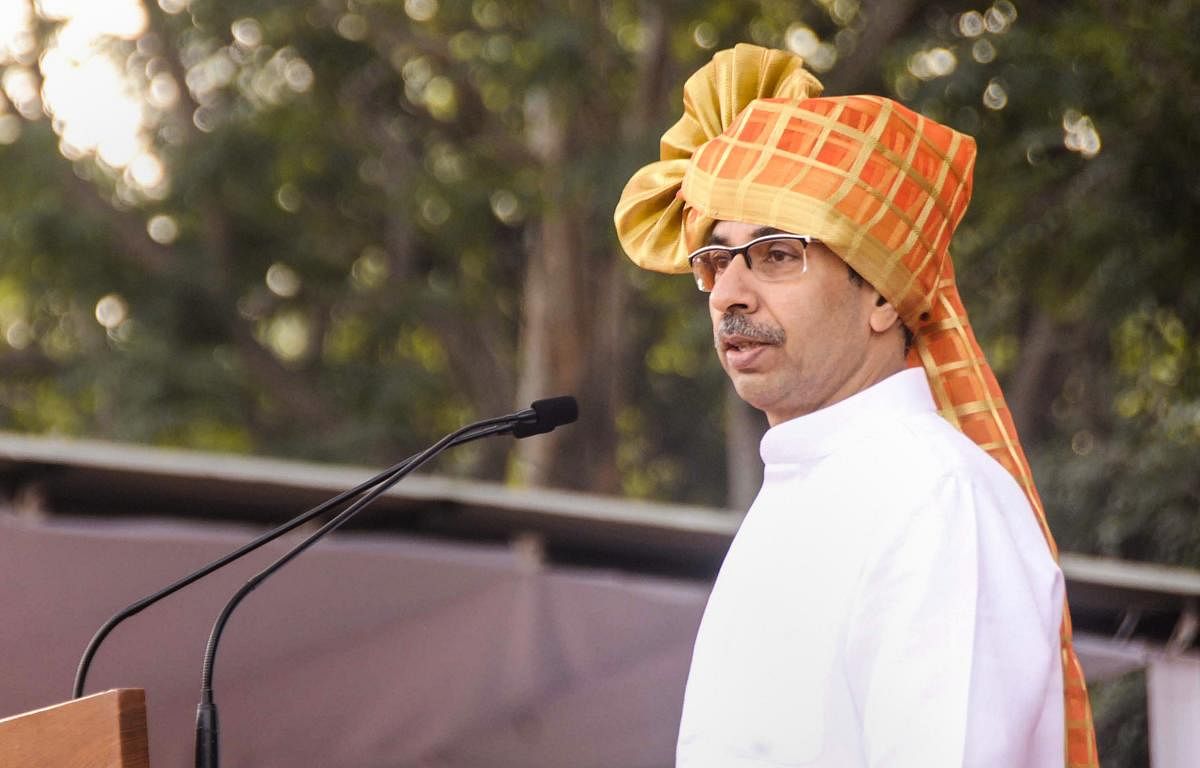
No sooner had Maharashtra Chief Minister Uddhav Thackeray announced a farm loan waiver that is expected to cost about Rs 50,000 crore, than mainline economists began to warn of the rising NPAs of the banks and the strain it causes to the already precarious fiscal position of the state government.
Strangely, the same questions were not raised when in early December, the Minister of State for Finance Anurag Thakur stated in a written reply in Parliament that public and private sector banks had written off Rs 80,893 crore during April-September 2019. According to news reports, when asked who the beneficiaries were, the minister replied: “As borrowers of loan write-offs continue to be liable for repayment and the process of recovery of dues from the borrowers in written-off loan amounts continues, write-off does not benefit the borrower.”
It is true that write-offs are not exactly waivers since it only means that the bad loans are shifted from the bank books to another ledger while the recovery process continues. But the write-offs certainly do benefit borrowers. Let’s be clear, it is not as if the entire bad debt is recovered by banks. The percentage of bad assets that the banks are finally able to recover is far too low. As per the RBI, the rate of recovery of bad loans had come down from 18.4% in 2014 to a low of 12.4% by March 2015. It further declined to 10.3% in 2016. To illustrate, out of an outstanding amount of Rs 2,21,400 crore of bad loans in 2016, only Rs 22,800 crore could be recovered. It will be interesting to know what happened to the remaining Rs 1,98,600 crore.
Although under the Insolvency & Bankruptcy Code (IBC) 2016, the recovery of bad loans has shown an improvement – a total of Rs 70,819 crore was recovered against a pending amount of Rs 1.66 lakh crore for 1,135 cases admitted before National Company Law Tribunal (NCLT) for insolvency resolutions in 2018-19 – falling from a recovery rate of 49.6% in 2017-18 to 42.5% in 2018-19. Add to this recoveries made through other routes like Lok Adalats, Debt Recovery Tribunals and SARFAESI Act, the scheduled commercial banks managed to recover only Rs 1.26 lakh crore from a total outstanding of Rs 8.15 lakh crore in 2018-19, or a recovery rate of 15.5%.
With the actual recovery being dismal, it is the banks that are taking the hit. No wonder, the government had two years back announced a recapitalisation programme of Rs 2.11 lakh crore to bail out banks, followed by another Rs 70,000 crore in 2019.
Against these corporate write-offs, farm loan waivers in the past six years total Rs 2.85 lakh crore (including Maharashtra’s proposed waiver). Compare this with just 354 liquidation cases pending for 2020. According to a news report, the claims for liquidation in respect of these companies stand at a staggering Rs 3.55 lakh crore.
As per the data available with the Insolvency and Bankruptcy Board of India, only 4% of this will be realised, which means only Rs 15,165 crore. Banks are staring at zero realisations in many of the pending insolvency cases.
While the bank write-offs affect a limited number of borrowers, a significant number of them being wilful defaulters, Maharashtra’s farm loan waivers are expected to benefit 4.4 million small and marginal farmers. Drawing from the experience of Punjab, Maharashtra has decided to waive bad farm loans up to an outstanding of Rs 2 lakh for each farmer. The problem with the Punjab farm loan waiver scheme is that only outstanding loans up to an exact Rs 2 lakh are waived, which means if the outstanding bank amount exceeds Rs 2 lakh even by Rs 500, the farmer will not get the waiver. This has led to a lot of resentment among Punjab farmers. I only hope Maharashtra does not do the same.
Coming at a time when a continuing drought was followed by heavy rains, a phenomenon termed as ‘wet drought’, standing crops in 70 lakh hectares are feared destroyed in Maharashtra. According to revenue estimates, almost 85% of the kharif crops in Marathwada region were destroyed. While more than 10 million farmers were affected from the incessant post-monsoon rains, the state had assessed the crop loss to be more than Rs 5,000 crore. Officials say Rs 6,552 crore has so far been distributed as crop loss compensation.
With farm distress continuing over decades, Maharashtra has turned into a hotbed of farmer suicides. In November 2019, a record 300 farmers committed suicide. In the six-year period between 2013 and 2018, an RTI response showed 15,356 farmers had committed suicide. It is generally agreed that the distress is primarily because farmers have continuously been denied their rightful income. An OECD-ICRIER study shows, between 2000 and 2016, Indian farmers lost Rs 45 lakh crore for not being paid the right price.
In the past seven years, as per NITI Aayog calculations, growth in real farm incomes had remained at ‘near zero’. In such a depressing farm scenario, farm debt has continued to multiply. Farm loan waivers, therefore, provide an immediate relief.
(The writer is an agricultural economist)